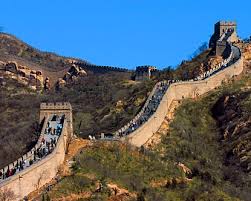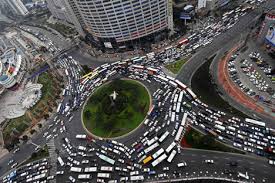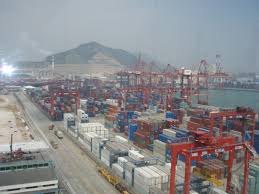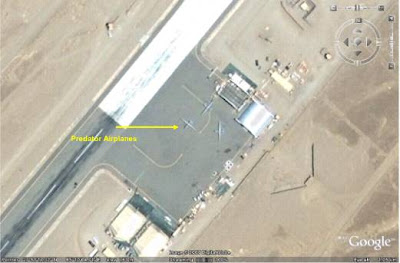

Due in large part to fears of dire consequences if nothing were done to tackle the economic crisis, China rushed through a 4 trillion yuan (US$586 billion) economic stimulus package in November 2008. The plan cobbled together existing and new initiatives focused on massive infrastructure development projects (designed, among other things, to soak up surplus steel, cement and labor capacity), tax cuts, green energy programs, and rural development.

Ever since the package was passed in November, Beijing has recited the mantra of the need to shift China’s economy from its heavy dependence on exports to one more driven by domestic consumption. But now that the sense of immediate crisis has passed, the stimulus policies are being rethought — and in an unusual development for China, they are being vigorously debated in the Chinese media.
Debating the Stimulus Package
In a country where media restrictions are tightening and private commentary on government officials and actions in blogs and online forums is being curtailed, it is quite remarkable that major Chinese newspaper editorials are taking the lead in questioning aspects of the stimulus package.
The question of stimulating rural consumption versus focusing the stimulus on the more economically active coastal regions has been the subject of particularly fierce debate. Some editorials have argued that encouraging rural consumption at a time of higher unemployment is building a bigger problem for the future. This argument maintains that rural laborers — particularly migrant workers — earn only a small amount of money, and that while having them spend their meager savings now might keep gross domestic product up in the short term, it will drain the laborers’ reserves and create a bigger social problem down the road. Others argue that the migrant and rural populations are underdeveloped and incapable of sustained spending, and that pumping stimulus yuan into the countryside is a misallocation of mo ney that could be better spent supporting the urban middle class, in theory creating jobs through increased middle-class consumption of services.
The lack of restrictions on these types of discussions suggests that the debate is occurring with government approval, in a reflection of debates within the Communist Party of China (CPC) and the government itself. Despite debate in the Chinese press, Beijing continues to present a unified public face on the handling of the economic crisis, regardless of internal factional debates. Maintaining Party control remains the primary goal of Party officials; even if they disagree over policies, they recognize the importance of showing that the Party remains in charge.
But, as the dueling editorial pages reveal, the Party is not unified in its assessment of the economic crisis or the recovery program. The show of unity masks a power struggle raging between competing interests within the Party. In many ways, this is not a new struggle; there are always officials jockeying for power for themselves and for their protégés. But the depth of the economic crisis in China and the rising fears of social unrest — not only from the migrant laborers, but also from militants or separatists in Tibet and Xinjiang and from “hostile forces” like the Falun Gong, pro-Democracy advocates and foreign intelligence services — have added urgency to long-standing debates over economic and social policies.
In China, decision-making falls to the president and the premier, currently Hu Jintao and Wen Jiabao respectively. They do not wield the power of past leaders like Mao Zedong or Deng Xiaoping, however, and instead are much more reliant on balancing competing interests than on dictating policy.
Party and Government Factions

Hu and Wen face numerous factions among the Chinese elite. Many officials are considered parts of several different factional affiliations based on age, background, education or family heritage. Boiled down, the struggle over the stimulus plan pits two competing views of the core of the Chinese economy. One sees economic strength and social stability centered on China’s massive rural population, while another sees China’s strength and future in the coastal urban areas, in manufacturing and global trade.
Two key figures in the Standing Committee of the Politburo (the center of political power in China), Vice President Xi Jinping and Vice Premier Li Keqiang, highlight this struggle. These two are considered the core of the fifth-generation leadership, and have been tapped to succeed Hu and Wen as China’s next leaders. They also represent radically different backgrounds.
Li is a protege of Hu and rose from the China Youth League, where Hu has built a strong support base. Li represents a newer generation of Chinese leaders, educated in economics and trained in less-developed provinces. (Li held key positions in Henan and Liaoning provinces.) Xi, on the other hand, is a “princeling.” The son of a former vice premier, he trained as an engineer and served primarily in the coastal export-oriented areas, including Hebei, Fujian and Zhejiang provinces and Shanghai.
In a way, Li and Xi represent different proposals for China’s economic recovery and future. Li is a stronger supporter of the recentralization of economic control sought by Hu, a weakening of the regional economic power bases, and a focus on consolidating Chinese industry in a centrally planned manner while spending government money on rural development and urbanization of China’s interior. Xi represents the view followed by former President Jiang Zemin and descended from the policies of Deng. Under that view, economic activity and growth should be encouraged and largely freed from central direction, and if the coastal provinces grow first and faster, that is just fine; eventually the money, technology and employment will move inland.
Inland vs. the Coast
In many ways, these two views reflect long-standing economic arguments in China — namely, the constant struggle to balance the coastal trade-based economy and the interior agriculture-dominated economy. The former is smaller but wealthier, with stronger ties abroad — and therefore more political power to lobby for preferential treatment. The latter is much larger, but more isolated from the international community — and in Chinese history, frequently the source of instability and revolt in times of stress. These tensions have contributed to the decline of dynasties in centuries past, opening the space for foreign interference in Chinese internal politics. China’s leaders are well aware of the constant stresses between rural and coastal China, but maintaining a balance has been an ongoing struggle.
Throughout Chinese history, there is a repeating pattern of dynastic rise and decline. Dynasties start strong and powerful, usually through conquest. They then consolidate power and exert strong control from the center. But due to the sheer size of China’s territory and population, maintaining central control requires the steady expansion of a bureaucracy that spreads from the center through the various administrative divisions down to the local villages. Over time, the bureaucracy itself begins to usurp power, as its serves as the collector of taxes, distributor of government funds and local arbiter of policy and rights. And as the bureaucracy grows stronger, the center weakens.
Regional differences in population, tax base and economic models start to fragment the bureaucracy, leading to economic (and at times military) fiefdoms. This triggers a strong response from the center as it tries to regain control. Following a period of instability, which often involves foreign interference and/or intervention, a new center is formed, once again exerting strong centralized authority.
This cycle played out in the mid-1600s, as the Ming Dynasty fell into decline and the Manchus (who took on the moniker Qing) swept in to create a new centralized authority. It played out again as the Qing Dynasty declined in the latter half of the 1800s and ultimately was replaced — after an extended period of instability — by the CPC in 1949, ushering in another period of strong centralized control. Once again, a more powerful regional bureaucracy is testing that centralized control.
The economic reforms initiated by Deng Xiaoping at the end of the 1970s led to a three-decade decline of central authority, as economic decision-making and power devolved to the regional and local leadership and the export-oriented coastal provinces became the center of economic activity and power in China. Attempts by the central government to regain some authority over the direction of coastal authorities were repeatedly ignored (or worse), but so long as there was growth in China and relative social stability, this was tolerated.
With Hu’s rise to power, however, there was a new push from the center to rein in the worst of excesses by the coastal leaders and business interests and refocus attention on China’s rural population, which was growing increasingly disenfranchised due to the widening urban-rural economic gap. In 2007 and early 2008, Hu finally gained traction with his economic policies. The Chinese government subsequently sought to slow an overheating economy while focusing on the consolidation of industry and the establishment of “superministries” at the center to coordinate economic activity. It also intended to put inland rural interests on par with — if not above — coastal urban interests. When the superministries were formed in 2008, however, it became apparent that Hu was not omnipotent. Resistance to his plans was abundantly evident, illustrating the power of the entrenched bureaucratic interests.
Economic Crisis and the Stimulus Plan
The economic program of recentralization and the attempt to slow the overheating economy came to a screeching halt in July 2008, as skyrocketing commodity prices fueled inflation and strained government budgets. The first victim was China’s yuan policy. The steady, relatively predictable appreciation of the yuan came to a stop. Its value stagnated, and there is now pressure for a slight depreciation to encourage exports. But as Beijing began shaping its economic stimulus package, it became clear that the program would be a mix of policies, representing differing factions seeking to secure their own interests in the recovery plan.
The emerging program, then, revealed conflicting interests and policies. Money and incentives were offered to feed the low-skill export industry (located primarily in the southeastern coastal provinces) as well as to encourage a shift in production from the coast to the interior. A drive was initiated to reduce redundancies, particularly in heavy industries, and at the same time funding was increased to keep those often-bloated industrial sectors afloat. Overall, the stimulus represents a collection of competing initiatives, reflecting the differences among the factions. Entrenched princelings simply want to keep money moving and employment levels up in anticipation of a resurgence in global consumption and the revitalization of the export-based economic growth path. Meanwhile, the rur al faction seeks to accelerate economic restructuring, reduce dependence on the export-oriented coastal provinces, and move economic activity and attention to the vastly underdeveloped interior.
Higher unemployment among the rural labor force is “proving” each faction’s case. To the princelings, it shows the importance of the export sector in maintaining social stability and economic growth. To the rural faction, it emphasizes the dangers of overreliance on a thin coastal strip of cheap, low-skill labor and a widening wealth gap.
Fighting it Out in the Media
With conflicting paths now running in tandem, competing Party officials are seeking traction and support for their programs without showing division within the core Party apparatus by turning to a traditional method: the media and editorials. During the Cultural Revolution, which itself was a violent debate about the fundamental economic policies of the People’s Republic of China, the Party core appeared united, despite major divisions. The debate played out not in the halls of the National People’s Congress or in press statements, but instead in big-character posters plastered around Beijing and other cities, promoting competing policies and criticizing others.
In modern China, big posters are a thing of the past, replaced by newspaper editorials. While the Party center appears united in this time of economic crisis, the divisions are seen more acutely in the competing editorials published in state and local newspapers and on influential blogs and Web discussion forums. It is here that the depth of competition and debate so well hidden among the members of the Politburo can be seen, and it is here that it becomes clear the Chinese are no more united in their policy approach than the leaders of more democratic countries, where policy debates are more public.
The current political crisis has certainly not reached the levels of the Cultural Revolution, and China no longer has a Mao — or even a Deng — to serve as a single pole around which to wage factional struggles. The current leadership is much more attuned to the need to cooperate and compromise — and even Mao’s methods would often include opportunities for “wayward” officials to come around and cooperate with Mao’s plans. But a recognition of the need to cooperate, and an agreement that the first priority is maintenance of the Party as the sole core of Chinese power (followed closely by the need to maintain social stability to ensure the primary goal), doesn’t guarantee that things can’t get out of control.
The sudden halt to various economic initiatives in July 2008 showed just how critical the emerging crisis was. If commodity prices had not started slacking off a month later, the political crisis in Beijing might have gotten much more intense. Despite competition, the various factions want the Party to remain in power as the sole authority, but their disagreements on how to do this become much clearer during a crisis. Currently, it is the question of China’s migrant labor force and the potential for social unrest that is both keeping the Party center united and causing the most confrontation over the best-path policies to be pur sued. If the economic stimulus package fails to do its job, or if external factors leave China lagging and social problems rising, the internal party fighting could once again grow intense.
At present, there is a sense among China’s leaders that this crisis is manageable. If their attitude once again shifts to abject fear, the question may be less about how to compromise on economic strategy than how to stop a competing faction from bringing ruin to Party and country through ill-thought-out policies. Compromise is acceptable when it means the survival of the Party, but if one faction views the actions of another as fundamentally detrimental to the authority and strength of the Party, then a more active and decisive struggle becomes the ideal choice. After all, it is better to remove a gangrenous limb than to allow the infection to spread and kill the whole organism.
That crisis is not now upon China’s leaders, but things nearly reached that level last summer. There were numerous rumors from Beijing that Wen, who is responsible for China’s economic policies, was going to be sacked — an extreme move given his popularity with the common Chinese. This was staved off or delayed by the fortuitous timing of the rest of the global economic contraction, which brought commodity prices down. For now, China’s leaders will continue issuing competing and occasionally contradictory policies, and just as vigorously debating them through the nation’s editorials. The government is struggling with resolving the current economic crisis, as well as with the fundamental question of just what a new Chinese economy will look like. And that question goes deeper than money: It goes to the very role of the CPC in China’s system.
















